在本应用说明中,我们将使用Empire XPU模拟和脉冲激励的时域结果来理解和优化从芯片到PCB的绑定过渡。该方法提供了沿信号路径的不连续位置的详细信息。使用过时域反射仪(TDR)分析方法:当脉冲沿着信号路径传播时,使用脉冲激励来研究反射和传输电压与时间的关系要,在任何阻抗不连续处,反射信号的幅度告诉我们线路阻抗的变化。传输路径分辨率取决于脉冲的带宽。基于IHP SG13S堆叠,使用一个简单的RFIC模型进行演示。本应用说明的主要目的是展示分析工作流程–设计示例。
The test circuit
Baseline model for this appnote is a 300µm thick chip placed inside a recessed cutout of the 254µm PCB, to minimize interconnect length. Wire bonds are used to connect the RF line as well as the multiple grounds. Pad size for the ground pads is 80µm with 20µm spacing.
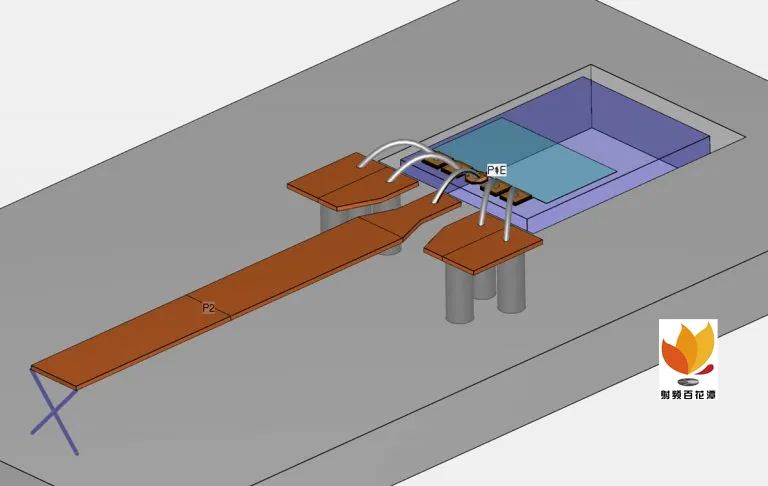
On chip, a lumped vertical port from TopMetal2 to Metal1 is used. The blue RF ground polygon on Metal 1 is approx. 10µm below the pads, so we have a nice short connection to all signal and ground pads. (Note to the GaAs designers: this SiGe stackup is different from GaAs, we don’t have the chip backside as the RF ground.)
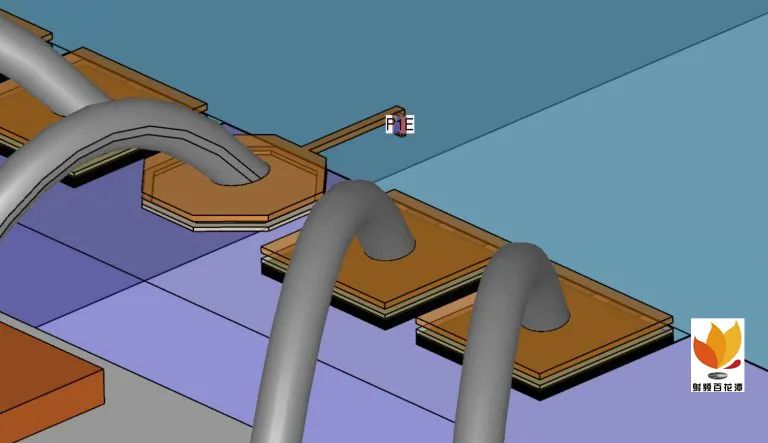
This results in rather poor RF performance as shown below:
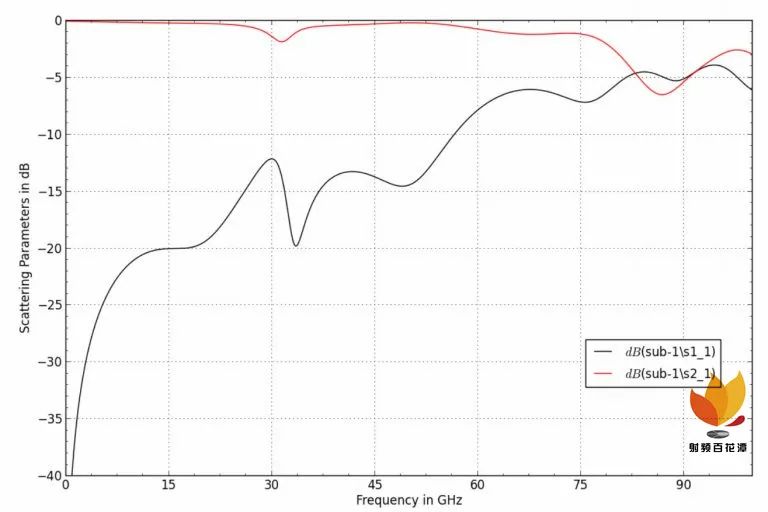
Test circuit time analyzed with time domain pulse
To help with an initial understanding of the time domain results, we have stretched the microstrip line on PCB. This results in a longer time delay until the signal from the chip reaches port 2 on the PCB, and we can study the reflections from the interconnect more easily.
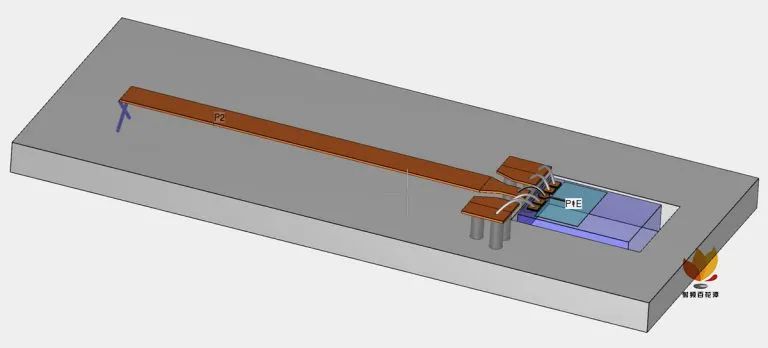
For excitation at port 1 on chip, we use a square pulse with 5ps duration, instead of the default gaussian pulse that is used for S-parameter simulations.
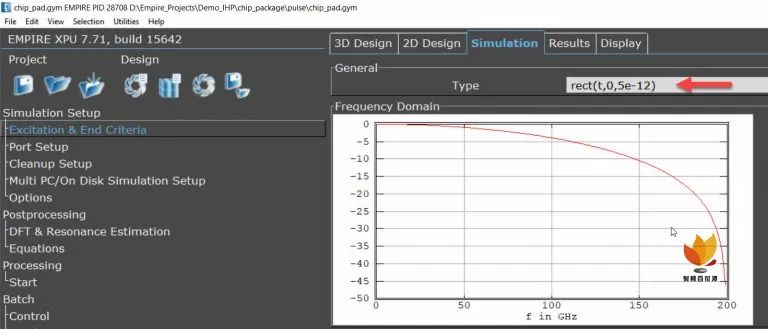
Simulation results for the time domain signal are shown below, plotted over time. Red is the incident voltage that we have defined in the excitation, green is the reflected voltage, black is the total instantaneous voltage at port 1 (incident + reflected) and blue is the voltage at port 2. We can see the time delay of the transmission of around 28ps, with a low pass response that takes out the fast slope from our initial square signal.
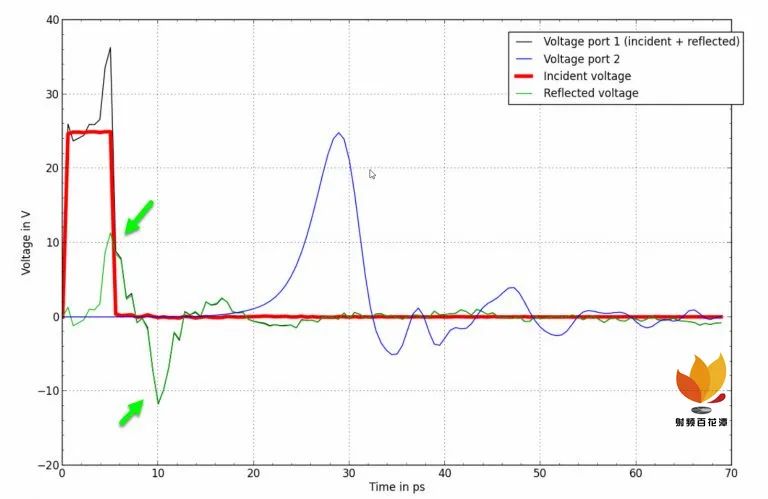
The green curve shows a positive reflection (line impedance increase) at 5ps delay and a negative reflection (line impedance decrease) at 10ps delay. This is the main issue that we need to solve. Looking at the geometry and related electrical length, we can identify that the positive peak is the bond wire (too much series inductance) and the negative peak is the pad at the end of the bond wire on PCB (too much shunt capacitance between signal and ground).

Improving the layout
Now that we have identified these two issues, we can think about counter measures: by changing the ground connection from wire bond to TSV, we can get rid of the ground pads that are near the signal pad on PCB. This reduces the shunt capacitance between signal and ground. It also enables us to increase signal line width at the bond (with having extra capacitance from small gap) and then have two bond wires for the signal path, instead of one.
TSV require a reduced chip thickness of 75µm, so the chip is now placed onto the PCB top side, without recessed mounting.
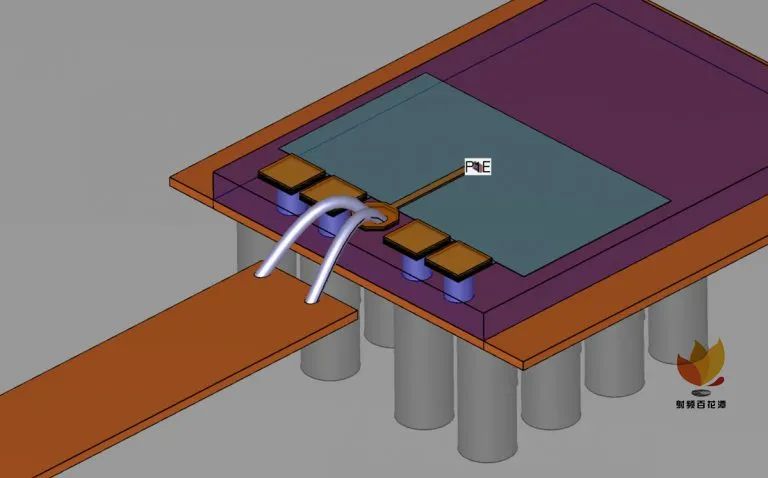
In time domain, we can see a strong reduction of the reflected signal (green) compared to the previous model (brown): The positive peak from bond wire inductance is much reduced, and the negative peak from the excess capacitance at the PCB landing pad is almost gone. So we expect a much better wideband performance now.
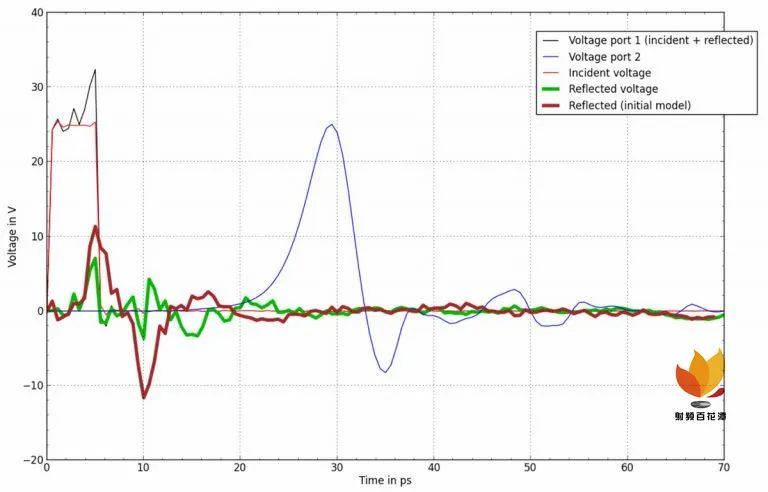
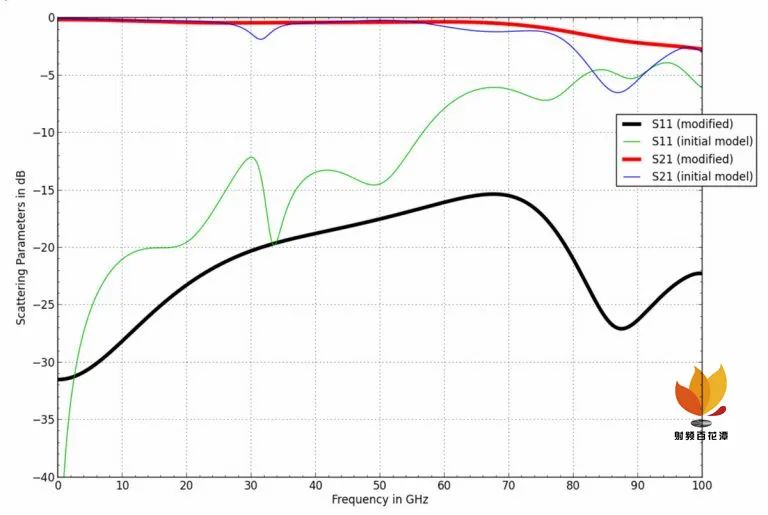
Why use time domain EM simulation?
Here, we use a time domain EM solver (Empire XPU) with direct pulse excitation in the time domain. This enables EM simulation with very short pulses, resulting in very high spatial resolution of discontinuities.
Summary
In this appnote, we have seen how TDR-like simulation methods, with evaluation of pulses in the time domain, can help to improve wide band response of interconnects. This type of simulation is easily done in Empire XPU by switching from the default gaussian excitation (useful for S-parameter simulation) to user defined excitation. Simulation times are very short using this method, because the FDTD method uses direct simulation in the time domain. Simulation time was less than 3 minutes on a Core i9 desktop PC, using 3 million mesh cells.
If needed, a more complex time signal could also be used for simulation, or an excitation signal with controlled rise time. However, for this “computed TDR” analysis the fast square wave signal seemed most useful.
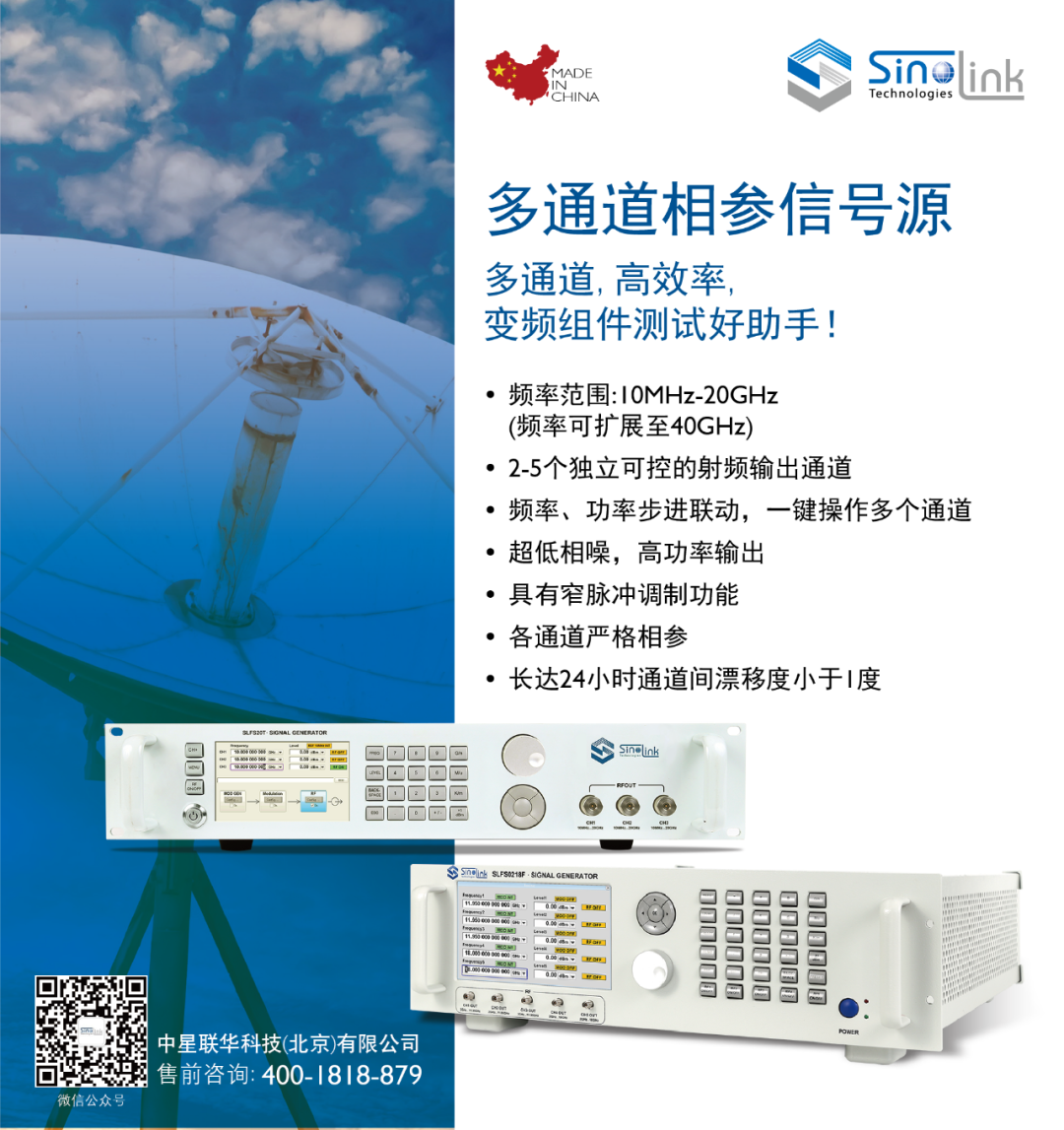
声明:
投稿/招聘/推广/宣传 请加微信:15989459034
